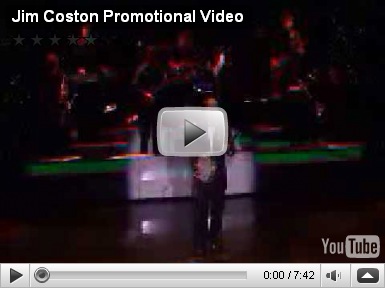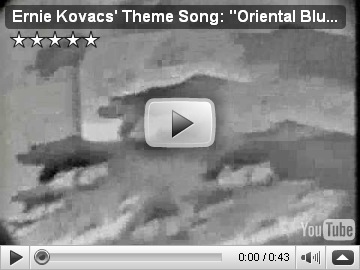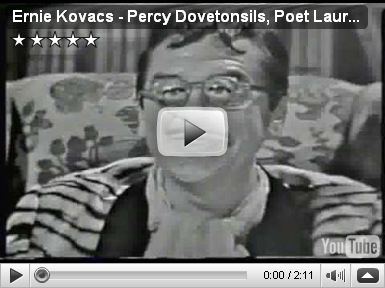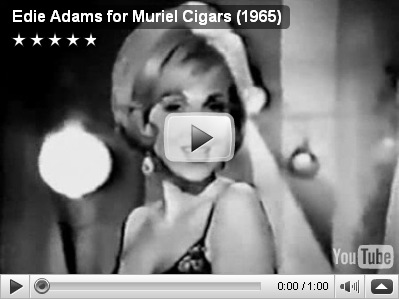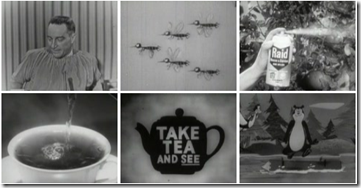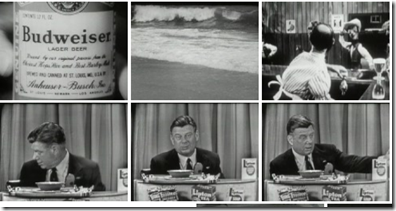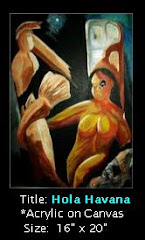
While I remember Ernie Kovacs from my childhood, those memories are faint, and in truth, there is no way that a six-year-old child could have appreciated the genius that was Ernie Kovacs.
I was fortunate enough in the 1970s to work as a paramedic with a guy named Bob Boller – who was 20 years my senior. At the station house (in between calls) we caught part of a PBS series which aired in 1977 on Kovacs, during which he regaled me with his memories of the Kovacs show.
That started a bit of a love affair for me with the mad genius of early TV.
For you see, Ernie was a television pioneer. So much so, that much of what he did first – in the 1950s – has been copied again, and again to the point that it almost seems clichéd today. But when Ernie did them, they were fresh and new.
Innovative, funny, irreverent, even dangerous . . . all describe the Kovacs style. And although much admired by TV critics, often his shows failed to attract mainstream audiences.
They were, quite frankly, 15 years ahead of their time.
Which makes it doubly sad that we’ve hundreds of hours of far less important programming that has been preserved, but precious little of Ernie Kovacs.
I wish I could simply point you to a repository of Kovacs videos, and tell you to drink your fill. But, alas, what we have left (and available online) are mostly scraps. Video snippets from his shows hosted on places like Google, Daily Motion, YouTube, and Bing.
There is, however, a 2-DVD set of that PBS series on Ernie Kovacs available on Amazon. And if today’s blog whets that appetite, you might consider it worth the expenditure.
But back to Ernie’s career.
He started out as a disc jockey back in the 1940’s on Trenton New Jersey’s WTTM radio, which led to his being tapped to host the first a ground breaking `morning show’ in a major market on TV; WPTZ’s Three To Get Ready (1950) out of Philadelphia.
The `Three’ stood for Channel 3, and the 90 minute show relied heavily on Kovac’s improvisational and ad lib’ing skills.
At the time, no one believed anyone would watch TV at 7am. Except Ernie, of course. The show was successful, and served as partial inspiration for NBC to launch their TODAY Show in 1954.
This morning show ran until 1952, and there Ernie began honing some of the camera trick, blackout skits, and outrageous humor that he would become famous for.
What would follow would be a series of highly imaginative TV shows and specials that strayed from the comfortable sit-coms and variety shows of the day, and as such, were usually not highly rated.
Kovacs worked without a studio audience, or canned laughter, most of the time. The reason being much of his humor depended upon the `camera tricks’ that a studio audience would only be able to see on the monitors.
A selected list of his works (from the TV Museum Bio) includes:
TELEVISION SERIES (selection)
1951 It's Time for Ernie
1951 Ernie in Kovacsland
1952-53, 1956 The Ernie Kovacs Show (first titled Kovacs Unlimited)
1960-61 Silents Please (host)
TELEVISION SPECIALS
1957 Festival of Magic (host)
1961 Private Eye, Private Eye (host)
1961-1962 The Ernie Kovacs Special
FILMS
Operation Mad Ball, 1957; Bell, Book and Candle, 1958; It Happened to Jane, 1958; Our Man In Havana, 1959; Wake Me When It's Over, 1960; Strangers When We Meet, 1960; Pepe, 1960; North to Alaska, 1960; Five Golden Hours, 1961; Sail a Crooked Ship, 1961; Cry for Happy, 1961.
The familiar opening to Ernie’s shows of the late 1950’s and early 1960’s featured the rinky-tink piano tune, Oriental Blues, which was pretty much a rip off of George Gershwin’s "Rialto Ripples Rag".
Everyone who remembers Ernie thinks immediately of The Nairobi Trio as being quintessentially Kovacs. Three improbable apes wearing derby hats pantomiming, as if part of some surrealistic music box, to Robert Maxwell's "Solfeggio".
A recurring bit, it was obvious that it was Ernie on the receiving end of the drummer, and the piano playing ape was often Ernie’s wife, Edie Adams. But the third member of the `trio’ was usually a guest, who went unnamed.
Word has it that Frank Sinatra and Jack Lemmon (both fans and friends of Ernie) donned the ape suit for this routine.
The `blackout sketch’, which Laugh In would copy, and use to great effect a decade later, was part and parcel of the Kovacs style. One such example comes from one of Kovac’s ABC monthly specials back in 1961.
The music? It’s not Bobby Darin, but it is `Mack The Knife’.
Sort of.
Here we have Ernie and Edie `Elephant hunting’.
Much of Kovac’s work revolved around music, as seen in his famous `Kitchen symphony’. The song is Cherokee, the big band number made famous by Charlie Barnet, which morphs into Bali Hai, then back.
Much of Kovac’s humor was character driven, and like Jackie Gleason and Sid Caesar, he had a `stable’ of characters that he often used. These included Wolfgang von Sauerbraten, Mr. Question Man, Auntie Gruesome (host of a horror show), magician Matzoh Heppelwhite, and most famously, TV poet Percy Dovetonsils.
A search of YouTube and Google Videos will turn up dozens of these rare, and delightful clips.
To get started, you can try this link.
Kovacs died in 1962 in a car wreck, leaving his wife Edie with a massive IRS debt (Kovacs was notorious for not paying income taxes). She managed, over the years, to pay off those debts, partly as a spokesmodel for Muriel Cigars.
An ad from 1965, shows some of her efforts:
We lost Edie in 2008, but over the past 40 years she had done a lot to archive and restore the legacy of early TV and Ernie Kovac’s work.
She consented to a 10-part interview in 1999, with the Archive of American Television.
That 5-hour interview can be viewed here.
Ahead of his time, underappreciated by the masses, and never a huge ratings success while he was alive, Ernie Kovacs was nonetheless selected in 1989 by People Weekly as one of the 25 top Television stars of the first 50 years of the medium.
An honor that was well deserved.


